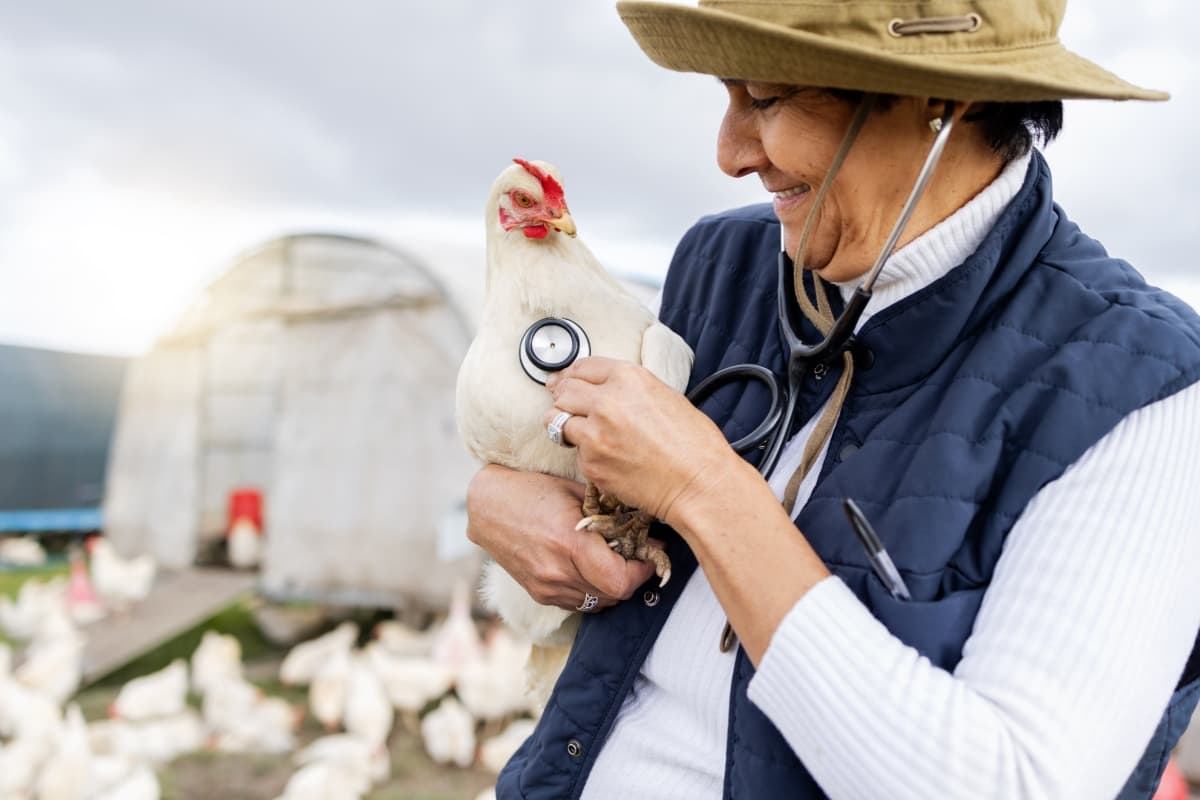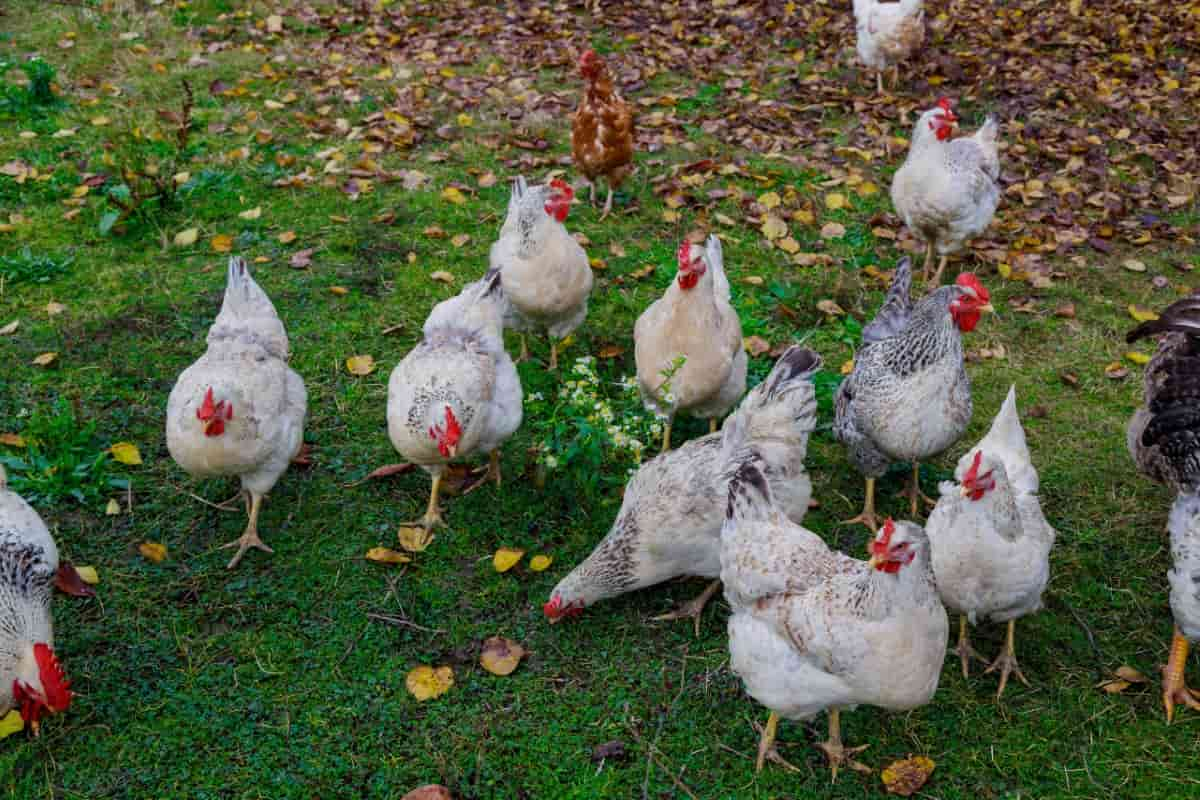Discover essential insights into poultry viral diseases to safeguard your flock’s health. Learn about avian influenza symptoms, Newcastle disease, Marek’s disease vaccination, and more. Identify symptoms like respiratory distress, decreased egg production, and neurological signs. Implement effective treatments such as antiviral medications and vaccinations for Marek’s disease.

Prevention strategies include strict biosecurity measures, proper vaccination protocols, and regular sanitation practices. Stay informed about gumbo disease, fowl pox, reovirus in broilers, and turkey rhinotracheitis to mitigate risks. Protect your poultry from viral threats with knowledge-based management practices and proactive disease control measures.
Poultry Viral Diseases
Avian Influenza
Poultry and other animals are susceptible to the extremely infectious respiratory viral illness known as avian influenza (AI). In chickens, turkeys, ducks, and geese, it may result in serious disease and even death. Direct contact with sick birds or their secretions, as well as contaminated feed, water, equipment, or clothes, may all spread the infection. The symptoms of AI include depression, loss of appetite, respiratory distress, coughing, sneezing, nasal discharge, swollen head and neck, purple comb and wattles, drop in egg production, and increased mortality.
The diagnosis of AI can be confirmed by laboratory tests such as virus isolation, PCR, or serology. The treatment of AI is mainly supportive and symptomatic. There is no specific antiviral drug available for AI. The control of AI depends on strict biosecurity measures, such as quarantine, disinfection, culling of infected and exposed birds, surveillance, and reporting. Vaccination can also be used as a preventive measure in endemic areas or high-risk situations.
Newcastle Disease
Newcastle disease acute viral disease of poultry characterized by involvement of the respiratory system, drop in egg production, and mortality as high as 100% in severe cases. The virus genus Avulavirus, family Paramyxoviridae, has five pathotypes based on the disease severity: viscerotropic velogenic (most pathogenic), neurotropic velogenic, mesogenic (moderate pathogenic), lentogenic (low pathogenic) and asymptomatic. The virus can survive on the mucous membrane of the human respiratory tract and can cause human death.
The virus is shed by infected birds in exhaled air, respiratory discharges, and feces and spread by direct or indirect contact with contaminated materials. The symptoms of ND include depression, diarrhea, cyanosis of comb and wattles, facial edema, twisting of the neck, and paralysis of wings and legs. The diagnosis of ND can be made by clinical signs, virus isolation, PCR, or serology. The treatment of ND is supportive and symptomatic. There is no specific antiviral drug available for ND.
The control of ND can be achieved by vaccination, proper management, and strict biosecurity. Live virus vaccines from lentogenic (La Sota, F, B1) or mesogenic (H, R2B) strains are used for primary or secondary vaccination of birds through ocular, nasal, or parenteral routes. Killed vaccines with oil adjuvant are used in endemic areas or layers and breeders to maintain high antibody levels.
Infectious Bronchitis (IB)
Infectious bronchitis highly contagious disease of poultry that affects the respiratory tract, kidneys, and reproductive system. It is caused by a coronavirus that has many serotypes and variants that differ in antigenicity and pathogenicity. The virus can be transmitted by aerosol or contact with infected birds or their secretions. The symptoms of IB include gasping, coughing, sneezing, nasal discharge, rales, wet eyes, reduced feed intake and weight gain, drop in egg production and quality, increased mortality, and kidney lesions.
The diagnosis of IB can be made by clinical signs, virus isolation, PCR, or serology. The treatment of IB is supportive and symptomatic. There is no specific antiviral drug available for IB. The control of IB can be done by vaccination with live or killed vaccines that match the circulating strains of the virus. However, cross-protection between different serotypes or variants is limited. Therefore, biosecurity measures such as sanitation, disinfection, and isolation are also important to prevent the introduction and spread of the virus.
Marek’s Disease
Marek’s disease highly contagious disease of chickens caused by a herpesvirus. It affects the nerves, eyes, skin, and internal organs of the birds. It can cause paralysis of the wings and legs, blindness, tumors, and death. The disease is spread with contact with infected birds or their feathers and dust. There is no treatment for Marek’s disease, but vaccination prevents or reduces the severity of the disease. Vaccination should be done at hatchery or on the first day of life.
In case you missed it: Combatting Calcium Deficiency in Chickens: Signs, Solutions, and Prevention

Infectious Bursal Disease (Gumboro)
Acute and extremely contagious viral sickness of young hens is known as infectious bursal disease. It has an impact on the lymphoid bursa of Fabricius, which is involved in immunity. It results in bursa inflammation and bleeding, which impairs immunity and makes one more vulnerable to subsequent infections. Oral or fecal contamination of feed, water, or equipment is the disease’s mode of transmission.
Clinical indicators include death, ruffled feathers, diarrhea, sadness, and dehydration. Infectious bursal disease has no known cure, however supportive care and medications may lessen the risk of subsequent infections. Vaccination may stop the illness from spreading or lessen its effects. Immunizations should begin between the ages of 14 and 18 days.
Avian Leukosis
Avian leukosis is a group of chronic viral diseases of chickens caused by retroviruses. It affects the blood cells, bone marrow, liver, spleen, kidneys, and other organs of the birds. It can cause tumors, anemia, enlarged organs, weight loss, weakness, and death. The disease is transmitted by vertical (from parent to offspring) or horizontal (from bird to bird) routes. There is no treatment or vaccine for avian leukosis, but prevention measures include testing and culling of infected birds, biosecurity, and hygiene.
Fowl Pox
Fowl pox is a common viral disease of poultry characterized by wart-like growths on the skin and mucous membranes of the birds. It affects the respiratory and digestive systems of the birds. It may lead to decreased egg production and quality, as well as problems breathing, eating, and drinking.
Direct contact with infected birds, their blood, or secretions may transmit the illness. It can also be transmitted by mosquitoes or other biting insects. There is no treatment for fowl pox, but vaccination can prevent and reduce the occurrence of the disease. Vaccination should be done at 6-8 weeks of age.
Avian Reovirus Infections
Avian reovirus infections are a group of viral diseases of poultry caused by reoviruses. They affect the joints, tendons, muscles, heart, liver, pancreas, and other organs of the birds. They can cause lameness, arthritis, tenosynovitis (inflammation of the tendon sheath), myocarditis (inflammation of the heart muscle), hepatitis (inflammation of the liver), pancreatitis (inflammation of the pancreas), enteritis (inflammation of the intestine), and mortality.
In case you missed it: Common Health Problems in Orpington Chickens and How to Prevent Them

The disease is spread by oral or fecal contamination of feed, water, or equipment. There is no specific treatment for avian reovirus infections, but supportive care and antibiotics can help reduce secondary infections. Vaccination can prevent severity of the disease. Vaccination should be done at 1-2 weeks of age.
Turkey Rhinotracheitis (TRT)
Turkey rhinotracheitis is an acute respiratory viral disease in turkeys caused by a pneumovirus. It affects the nasal passages, trachea, bronchi, and lungs, causing symptoms like sneezing, coughing, and weight loss. Spread disease by direct or indirect contact with infected birds. There is no treatment, but supportive care and antibiotics can reduce secondary infections. Vaccination can prevent or reduce TRT incidence is recommended at 4-6 weeks of age.
Duck Virus Enteritis (Duck Plague)
Duck virus enteritis is an acute hemorrhagic viral disease of ducks, geese, and swans caused by a herpesvirus. It affects the digestive, respiratory, and reproductive systems of the birds. It can cause bloody diarrhea, nasal discharge, conjunctivitis (inflammation of the eye membrane), egg drop, abortion, and death. Spread disease by direct or indirect contact with infected birds or their secretions or carcasses. There is no treatment for duck virus enteritis, but vaccination can prevent or reduce the mortality of the disease. Vaccination should be done at 4-6 weeks of age.
In case you missed it: Gout Management in Chicken: Disease Symptoms, Treatment, Diagnosis, and Prevention

Conclusion
Poultry viral diseases are serious threats to the health and productivity of poultry. They can cause various clinical signs and lesions in the birds, as well as economic losses for the farmers. Therefore, it is important to diagnose, treat, and control these diseases in a timely and effective manner. The best way to prevent or reduce these diseases is to follow a proper vaccination program, biosecurity measures, and hygiene practices.
- Types of Fungicides Used in Agriculture
- Common Issues in the Fruit Development Stage of Pomegranate Farming
- Fruit Development Issues in Papaya: Easy Solutions and Treatment
- Soil-Borne Diseases and How to Protect Your Plants
- Practices to Prevent Disease Spread in the Garden
- From Wilted to Thriving: How to Treat Root Rot Naturally in Houseplants
- Natural Remedies to Cure Brown Spots on Fig Tree Leaves
- Natural Solutions for Poinsettia Problems: 100% Effective Remedies
- How to Control Calla Lily Problems: Natural Remedies for Leaf and Flower Problems